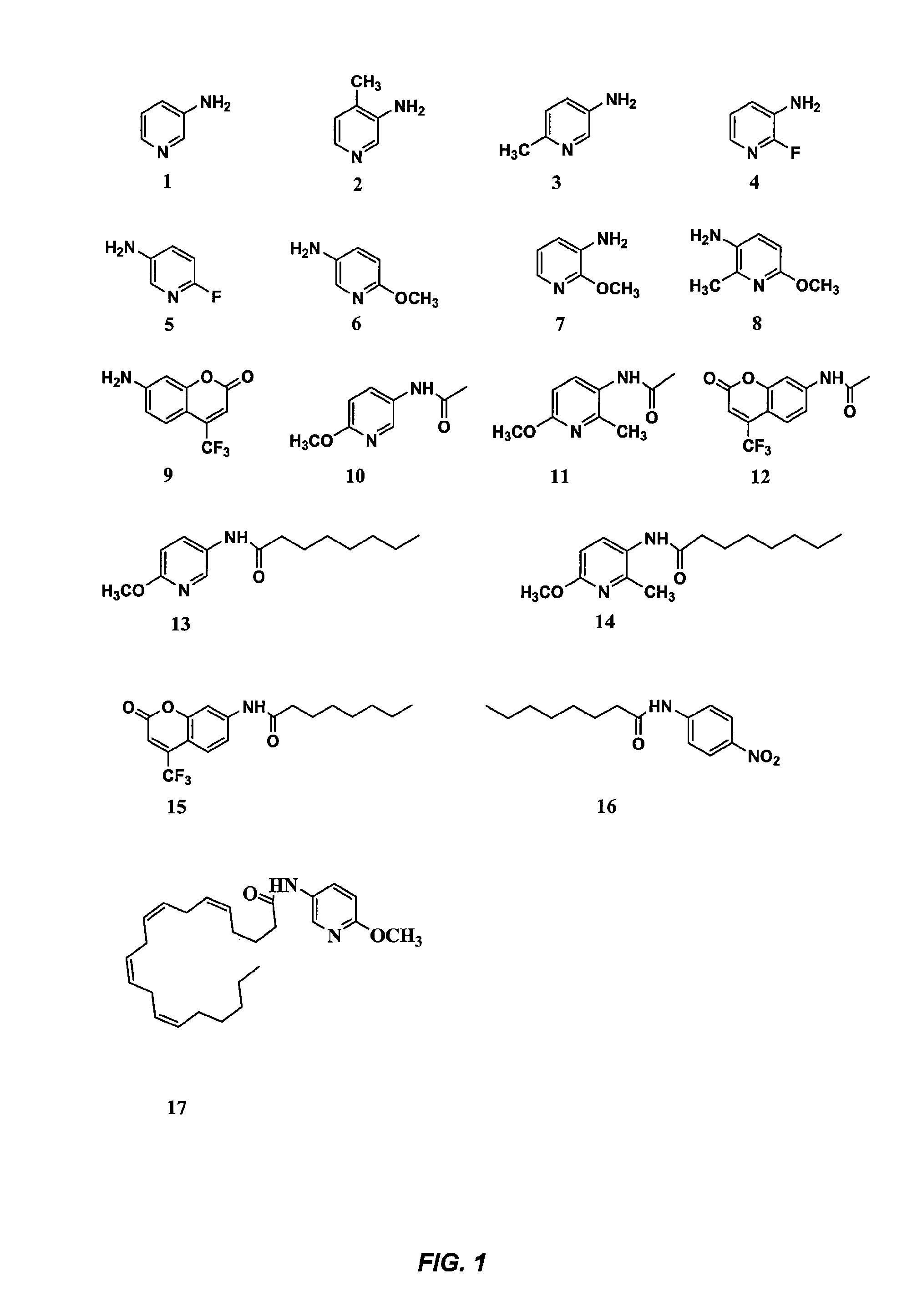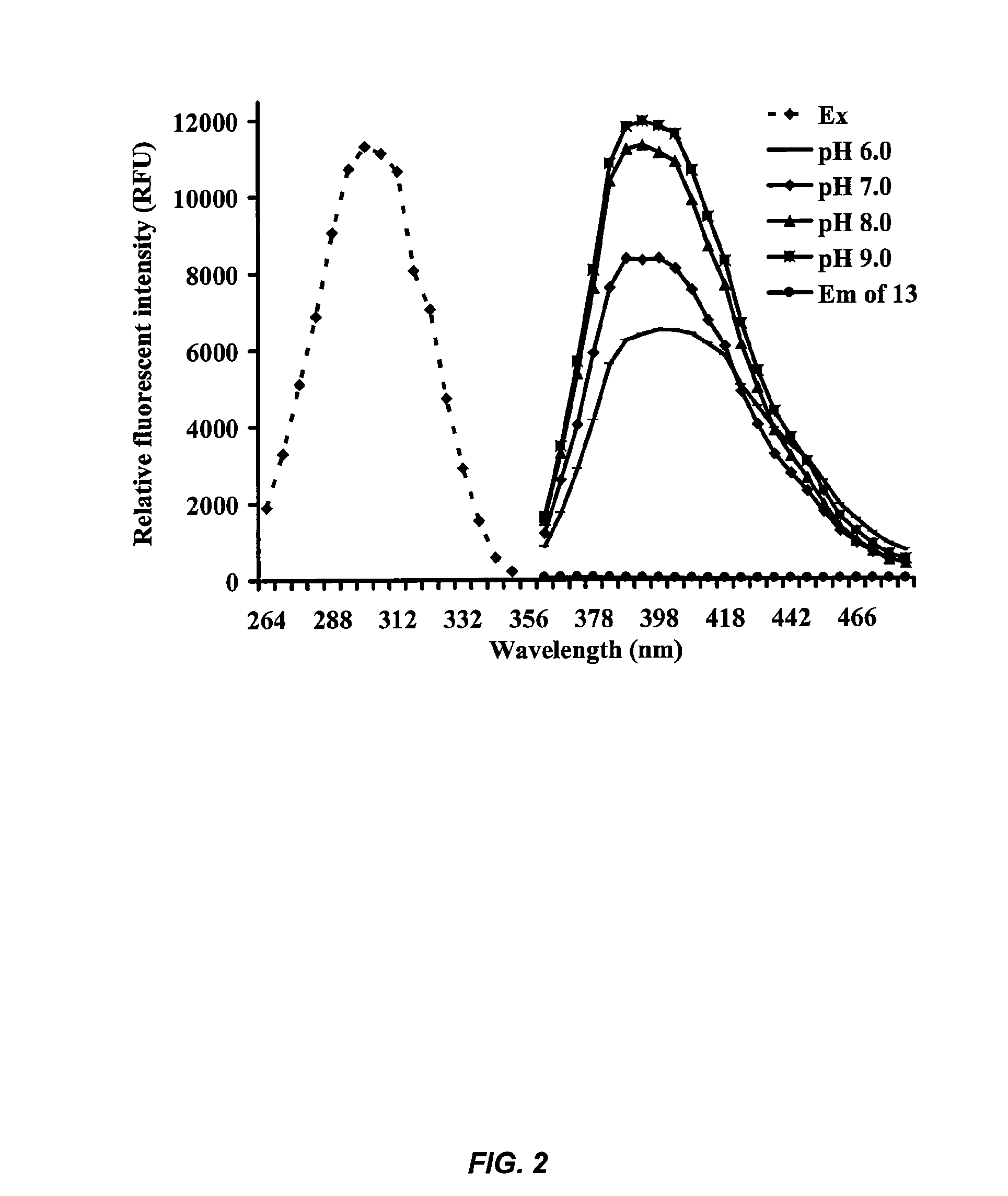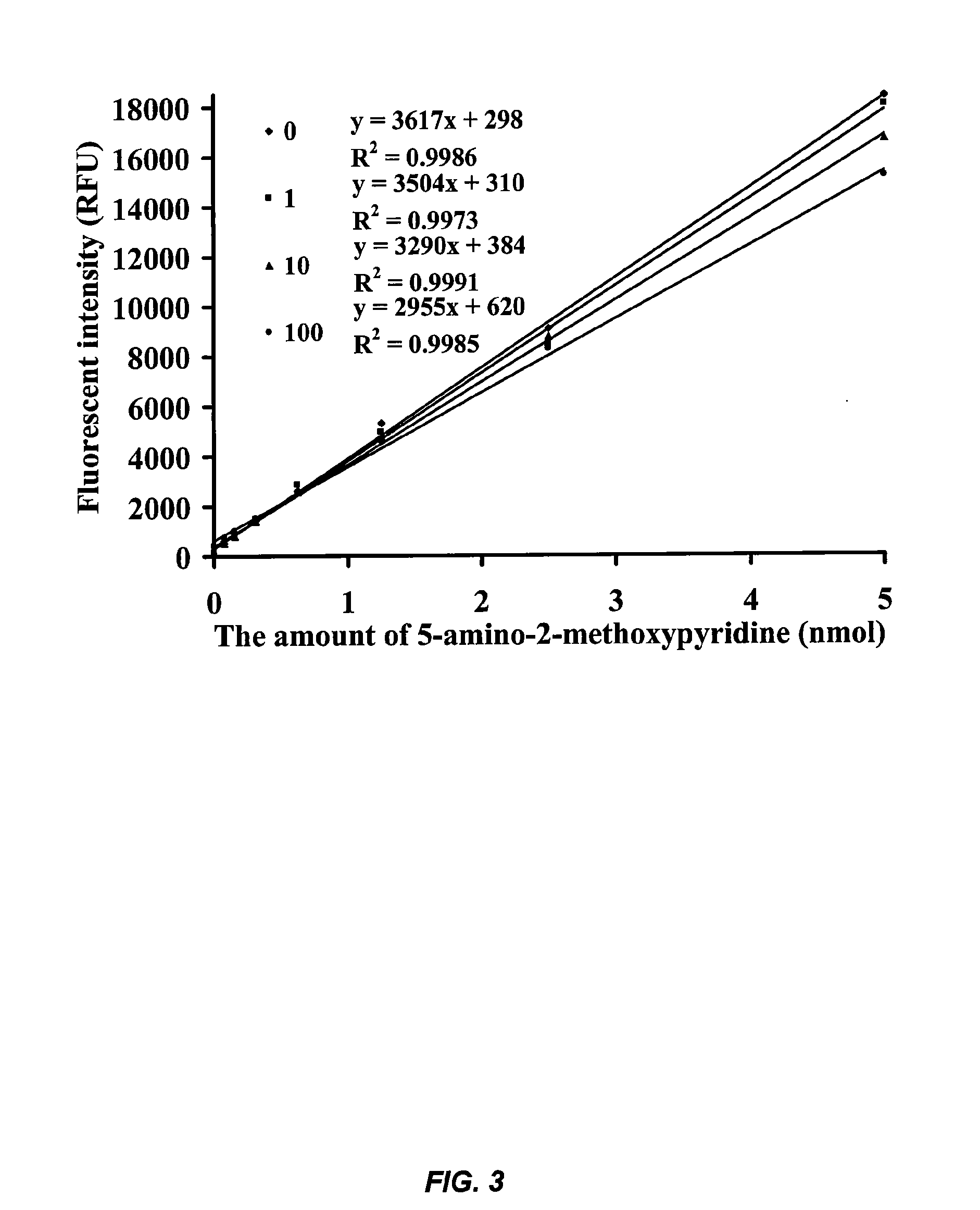Substituted Aminopyridines as Fluorescent Reporters for Amide Hydrolases
a technology of amide hydrolase and fluorescent reporter, which is applied in the direction of peptides, peptide sources, peptide/protein ingredients, etc., can solve the problems of lack of sensitivity, limited application of this assay, and limited application
- Summary
- Abstract
- Description
- Claims
- Application Information
AI Technical Summary
Benefits of technology
Problems solved by technology
Method used
Image
Examples
example 1
Highly Sensitive Fluorescent Assays for Fatty Acid Amide Hydrolase
[0102]This example describes the development of novel and highly sensitive fluorescent substrates for fatty acid amide hydrolase (FAAH) that are based on substituted aminopyridines. In particular, an examination of the relationship between the structure and fluorescence of substituted aminopyridines indicated that a methoxy group para to the amino group in the pyridine ring greatly increased the fluorescence of substituted aminopyridines (i.e., quantum yields approached one unity). These novel fluorescent reporters had high Stokes' shifts of 94 nm, and their fluorescence in buffer systems increased with pH values from neutral to basic. In addition, fluorescent substrates with these reporters displayed very low fluorescent background and high aqueous solubility. Most importantly, fluorescent assays for FAAH based on these substrates were at least 25 times more sensitive than related compounds with either colorimetric o...
example 2
Highly Sensitive Fluorescent Assays for Aminopeptidases
[0138]This example describes the development of novel and highly sensitive fluorescent substrates for aminopeptidases that are based on substituted aminopyridines. Aminopeptidases are a class of enzymes that hydrolyze the N-terminal peptidase bond in proteins and peptides. They have a broad substrate specificity and are widely distributed in many tissues and cells in animals, bacteria, viruses, and plants. L-leucine aminopeptidase is one of the best studied aminopeptidases. It is of significant biological and medical importance because its altered activity is observed in multiple diseases such as cancer, eye lens aging, and cataracts. It may also play an important role in the early events of HIV infection and thus serum L-leucine aminopeptidase activity may be a useful marker of HIV infection and response to chemotherapy (Grembecka et al., Mini Rev. Med. Chem., 1:133-144 (2001)). Highly sensitive assays are necessary to identify...
example 3
Red-Shifted Substituted Aminopyridines
[0148]This example describes the development of substituted aminopyridines with optical properties that are shifted towards the red end of the electromagnetic spectrum. As shown in FIG. 7, the presence of an electron-donor group such as a dimethylamino group para to the amine group on the aminopyridine produces a substituted aminopyridine with a red-shifted spectrum. For example, substitution of a methoxy group for a dimethylamino group shifts the excitation wavelength from 302 nm to 330 nm and the emission wavelength from 396 nm to 444 nm.
PUM
| Property | Measurement | Unit |
|---|---|---|
| excitation wavelength | aaaaa | aaaaa |
| emission wavelength | aaaaa | aaaaa |
| excitation wavelength | aaaaa | aaaaa |
Abstract
Description
Claims
Application Information
 Login to View More
Login to View More - R&D
- Intellectual Property
- Life Sciences
- Materials
- Tech Scout
- Unparalleled Data Quality
- Higher Quality Content
- 60% Fewer Hallucinations
Browse by: Latest US Patents, China's latest patents, Technical Efficacy Thesaurus, Application Domain, Technology Topic, Popular Technical Reports.
© 2025 PatSnap. All rights reserved.Legal|Privacy policy|Modern Slavery Act Transparency Statement|Sitemap|About US| Contact US: help@patsnap.com



